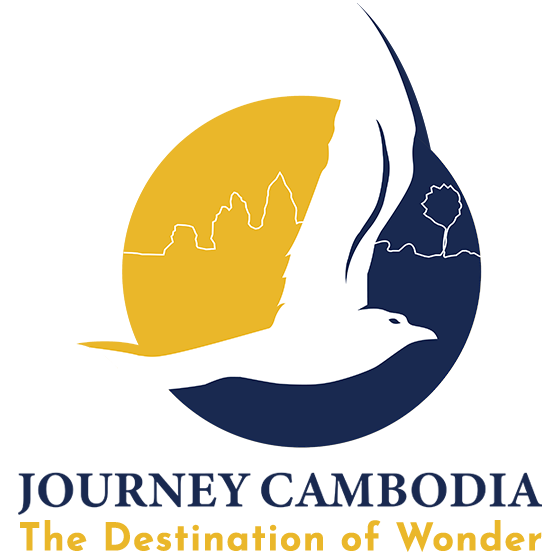Which Temples Are Included in the Small/Mini/Large Circuit Tour? Your Complete Guide to Angkor’s Temple Routes
Small vs Large Circuit at Angkor – One Tour Feels Like a Trailer, the Other Like the Full Movie – You’ll Miss 5 Mind-Blowing Temples If You Pick the Wrong Route—This Guide Saves You from Regret
Which temples are included in the small/mini/large circuit tour? The Angkor small circuit temples include 14 major sites like Angkor Wat, Bayon, and Ta Prohm in a 17km route, while the Angkor large circuit temples cover 21 temples including Preah Khan, Neak Pean, and East Mebon across 26km. These temple tour map Angkor routes help visitors see the best temples based on their time and interests.
Popular with first-time visitors, these circuits offer different experiences – from iconic temples to hidden treasures. Key highlights include:
- Skip-the-line access to world-famous temples
- Professional guides explaining temple history
- Strategic routes avoiding major crowds
- Perfect photo opportunities at sunrise and sunset spots
Overall, choosing the right circuit helps you see Cambodia’s ancient wonders without missing the must-see temples.
Which Temples Are Included in the Small/Mini/Large Circuit Tour? The Complete Temple Breakdown
Planning your Angkor visit feels overwhelming with over 72 temples spread across 400 square kilometers. But here’s the thing – you don’t need to see them all. The Angkor circuit itinerary system makes everything simple.
Which temples are included in the small/mini/large circuit tour? This question comes up every single day from travelers planning their Cambodia adventure. The answer depends on what you want from your temple experience.
The mini circuit Angkor Wat route focuses on the greatest hits. Think of it as the trailer version – you get all the iconic scenes that made Angkor famous worldwide. Meanwhile, the large circuit feels like watching the full movie with director’s commentary and deleted scenes.
Here’s what most people don’t realize: these circuits were designed by French archaeologists in the 1920s. They knew exactly which temples would blow your mind and which ones needed more time to appreciate.
| Circuit Type | Distance | Temples | Best For | Time Needed |
|---|---|---|---|---|
| Small/Mini Circuit | 17km | 14 temples | First-time visitors | 6-8 hours |
| Large/Grand Circuit | 26km | 21 temples | Temple enthusiasts | 8-10 hours |
| Extended Circuit | 50km+ | 30+ temples | Multiple visits | 2-3 days |
The Small Circuit: Your Gateway to Angkor’s Greatest Hits
The Angkor small circuit temples pack incredible punch into one manageable day. Start at sunrise with Angkor Wat – the world’s largest religious building. The reflection pools create mirror images that photographers dream about.
Next comes the Angkor Thom tour route through the ancient city walls. The South Gate features massive stone faces that seem to follow your movement. Inside, Bayon Temple small circuit reveals 216 serene faces carved into stone towers.
Ta Prohm small circuit offers something completely different. Giant trees grow through temple walls creating a natural jungle gym. This is where Tomb Raider was filmed, and you’ll understand why immediately.
Complete Small Circuit Temple List:
- Angkor Wat – The crown jewel (sunrise spot)
- Phnom Bakheng – Sunset mountain temple
- Angkor Thom South Gate – Giant guardian statues
- Bayon – 216 mysterious faces
- Baphuon – Reconstructed temple mountain
- Phimeanakas – Royal palace temple
- Terrace of the Leper King – Intricate wall carvings
- Terrace of the Elephants – Royal parade ground
- Ta Keo – Steep pyramid temple
- Thommanon – Small but perfect condition
- Chau Say Tevoda – Thommanon’s twin temple
- Ta Prohm – Tree temple from Tomb Raider
- Banteay Kdei – Peaceful monastery ruins
- Srah Srang – Royal bathing pool
Real Talk About Crowd Reality
I watched a family from Australia spend three hours at Angkor Wat trying to get ONE photo without crowds. The dad was getting frustrated, the kids were tired, and mom was ready to give up. Then their guide suggested the Angkor Wat Highlights and Sunrise Guided Tour strategy – arrive before sunrise, see the main temples early, then hit the peaceful spots during lunch rush. Game changer.
9:45 AM Pickup – Angkor Thom, Ta Prohm and Sunset in Angkor Wat Golden Hour Tour
The Large Circuit: Where Temple Magic Gets Real
Angkor large circuit temples tell a different story. These sites get maybe 15% of Angkor Wat’s visitors, which means you often have ancient wonders almost to yourself.
Preah Khan large circuit serves as the circuit’s masterpiece. This temple city once housed 100,000 people including 1,000 teachers and 1,000 dancers. Walking through feels like exploring an abandoned civilization.
Neak Pean large tour sits on an artificial island surrounded by water. During rainy season, the temple appears to float. The symbolism represents the mythical lake at the center of the universe.
Complete Large Circuit Temple List:
- Pre Rup – Pre Rup sunset spot with panoramic views
- East Mebon temple – Island temple in ancient reservoir
- Ta Som – Tree-covered eastern gate
- Neak Pean – Floating temple island
- Banteay Prei – Jungle-covered ruins
- Preah Khan – Massive temple city complex
- Angkor Thom North Gate – Less crowded entrance
| Temple | Circuit | Special Feature | Crowd Level | Best Photo Time |
|---|---|---|---|---|
| Angkor Wat | Small | Sunrise reflection | Very High | 6:00-7:00 AM |
| Ta Prohm | Small | Tree roots | High | 2:00-4:00 PM |
| Bayon | Small | Stone faces | High | 8:00-10:00 AM |
| Preah Khan | Large | Jungle temple city | Low | Any time |
| Neak Pean | Large | Water temple | Very Low | 10:00 AM-3:00 PM |
| Pre Rup | Large | Sunset views | Medium | 5:00-6:30 PM |
Cambodia Context: Why These Circuits Matter
Cambodia sits in Southeast Asia’s heart, bordered by Thailand, Laos, and Vietnam. The country spent centuries under the mighty Khmer Empire, which built these incredible temples between 800-1400 AD.
Siem Reap serves as your base camp for temple exploration. This charming city transformed from sleepy town to tourism hub after Angkor’s UNESCO designation in 1992. The new Siem Reap Angkor International Airport makes getting here easier than ever.
Phnom Penh, Cambodia’s capital, offers a different experience. Most visitors fly into Phnom Penh then take buses or domestic flights to Siem Reap. The capital showcases modern Cambodia while Siem Reap preserves ancient history.
Angkor Archaeological Park – Are there restrooms, food, and water available inside the complex?
Secret Temples Most Tourists Miss
Banteay Kdei circuit hides peaceful courtyards perfect for meditation. Unlike crowded Ta Prohm nearby, you can sit quietly and absorb the spiritual atmosphere.
Srah Srang sunrise view creates magic without Angkor Wat’s chaos. The royal bathing pool reflects morning light like a mirror. Local photographers call this their secret sunrise spot.
The Tourism Industry Secret
Big tour companies avoid promoting certain temples in the large circuit. Why? They can’t fit 40-person buses at remote sites, and they can’t rush groups through in 15 minutes for photos. That’s exactly WHY you should visit them. When the industry says “too difficult to profit from,” travelers should hear “absolutely perfect experience.”
Smart Circuit Combinations and Tour Options
Most visitors combine circuits based on their stay length:
One Day Strategy:
- Morning: Small circuit highlights (Angkor Wat, Bayon, Ta Prohm)
- Afternoon: Angkor Wat Sunset Tour for perfect ending
Two Day Strategy:
- Day 1: Complete Angkor circuit itinerary small route
- Day 2: Banteay Srei and Grand Circuit Heritage Tour including remote temples
Three Day Strategy:
- Day 1: Small circuit morning temples
- Day 2: Sunset in Angkor Wat focused experience
- Day 3: Large circuit plus Banteay Srei
Temple Groupings Angkor Park by Historical Period
| Period | Temples | Style Features | Must-See Example |
|---|---|---|---|
| Early Angkor (800-1000) | Bakong, Lolei | Simple brick towers | Bakong pyramid |
| Classical (1000-1150) | Angkor Wat, Ta Keo | Perfect proportions | Angkor Wat |
| Bayon Period (1150-1250) | Bayon, Ta Prohm, Preah Khan | Buddhist themes, faces | Bayon’s smiling faces |
| Late Period (1250-1400) | Banteay Kdei, Ta Som | Smaller scale, detailed carving | Ta Som’s tree gate |
The Angkor Wat Afternoon Tour option works great for avoiding morning crowds and extreme heat.
I Found 5 Angkor Empty Temples While 5,000 Tourists Crowded Angkor Wat
Best Route for Angkor Temples Based on Your Interests
Photography Focus:
- Srah Srang sunrise view (6:00 AM)
- Angkor Wat back entrance (7:00 AM)
- Ta Prohm small circuit (2:00 PM soft light)
- Pre Rup sunset spot (5:30 PM)
History and Architecture:
- Angkor Wat (detailed exploration)
- Bayon Temple small circuit (face towers)
- Baphuon (reconstruction story)
- Preah Khan large circuit (temple city layout)
Spiritual Experience:
- Banteay Kdei circuit (peaceful meditation)
- Ta Prohm (nature and human creation)
- Bayon (Buddhist philosophy)
- Neak Pean large tour (healing temple symbolism)
Angkor Circuit Tour Comparison: Key Differences
Small Circuit Advantages:
- All the famous temples you’ve seen in photos
- Manageable distance for one day
- Better infrastructure and facilities
- Professional guides available everywhere
Large Circuit Advantages:
- Dramatically fewer crowds
- More authentic exploration feeling
- Better photography opportunities
- Deeper cultural immersion
Combined Circuit Benefits:
- Complete historical timeline understanding
- Varied architectural styles appreciation
- Strategic crowd avoidance opportunities
- Maximum value from temple pass investment
Angkor Circuit Entrance Gates and Access Points
| Gate | Serves | Crowd Level | Best For |
|---|---|---|---|
| West Gate (Main) | Angkor Wat | Very High | First-time visitors |
| South Gate | Angkor Thom | High | Small circuit access |
| North Gate | Angkor Thom | Medium | Large circuit start |
| East Gate | Ta Prohm area | Medium | Photography tours |
Planning Your Two-Day Temple Tour Strategy
Day 1: Small Circuit Foundation
- 5:30 AM: Angkor Wat sunrise
- 8:00 AM: Angkor Thom complex
- 10:30 AM: Ta Prohm small circuit
- 1:00 PM: Lunch break
- 3:00 PM: Banteay Kdei circuit
- 5:00 PM: Srah Srang sunrise view for sunset
Day 2: Large Circuit Adventure
- 8:00 AM: Preah Khan large circuit
- 10:30 AM: Neak Pean large tour
- 12:00 PM: Ta Som large circuit
- 2:00 PM: East Mebon temple
- 4:00 PM: Pre Rup sunset spot
Must-See Temples in Each Circuit: The Non-Negotiables
Small Circuit Must-Sees:
- Angkor Wat – World’s largest religious building
- Bayon – 216 mysterious stone faces
- Ta Prohm – Nature reclaiming human creation
Large Circuit Must-Sees:
- Preah Khan – Massive temple city complex
- Pre Rup – Best sunset viewing temple
- Neak Pean – Unique island temple design
Final Thoughts: Choosing Your Temple Adventure
After planning thousands of visitors through these temple circuits, I’ve learned that the “right” choice depends entirely on what moves you. Some people find spiritual connection in Angkor Wat’s massive scale. Others prefer the intimate mystery of jungle-covered Preah Khan large circuit.
The small circuit gives you bragging rights and Instagram photos. The large circuit gives you stories you’ll tell for decades. Both give you a window into one of history’s greatest civilizations.
Your Cambodia temple experience starts with understanding these circuits. Pick based on your interests, not what everyone else recommends. Trust me – whether you choose the greatest hits or the deep cuts, Angkor will change how you see ancient human achievement.
Ready to start planning? Contact us for personalized circuit recommendations based on your travel style, fitness level, and interests. We’ll help you choose the perfect temple route for your Cambodia adventure.
Helpful Resources:
- Journey Cambodia Official Temple Tours
- Angkor Archaeological Park Official Website
- UNESCO World Heritage Angkor Conservation Office









